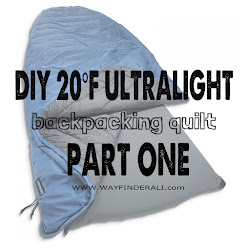Take the Right Tent
A tent in the wrong environment spells misery, no matter how well you set it up!
- High winds: (beach, mountain-top, plains) Take a low profile dome or pyramid. The lower the better! If you're camping on the beach, take a tent that's shorter than the dunes.
- Hot and humid: Two wall tent with as much mesh as possible means better ventilation. Go as big as you can get away with- a bigger tent won't get as hot.
- Cold and dry: Single wall tents are warmer and more wind-resistant. Get the smallest one you fit in, because your body heat will keep a smaller tent warmer.
- Raining cats and dogs: Make sure your rain fly covers the tent entirely and reaches all the way down to the ground. A vestibule (a covered 'porch' area under the rain fly) is a gear saver in wet weather.
Follow the Video for the Perfect Pitch
Can't watch the video? Keep reading...

Pack Before you Go
Unpack, and then re-pack
Can't watch the video? Keep reading...

Pack Before you Go
Unpack, and then re-pack
- Unpack: and separate the tent, poles, rain fly, footprint and stakes
- Stuff don't roll: stuffing protects the waterproof coating on your tent and rain fly
- Stuff in opposite order: rain fly at the bottom, poles on the side, then tent, then footprint, then stakes
Use the Right Tools
 |
| Buffy chose the right stake for killing vampires. You should pick the right stake for your campsite |
See what I did there?! But seriously, you need the correct type of stakes for the environment you're camping in. Those cheap aluminum stakes your tent came with? Leave them at home.
Forests and general use: MSR Groundhog Tent Stakes are super strong and won't bend when you hammer them, and resist being pulled out due to their design
Sand: 12" Sand Stakes because bigger is better
Set-up in this order

- Stake it first: Stake out the footprint and tent, with the narrow side into the wind. Stake down the windward side first.
- Poles: Set up the poles and connect the tent to the poles
- Rain fly: Put the rain-fly on the tent and connect it. Connect the windward side first.
- Guy lines and vestibules: Stake out all the guy lines and vestibules to make your tent strong against the wind, and to keep the rain fly tighter. A tight rain-fly will shed water and is less likely to leak.
Did you find this post helpful? If you did, consider supporting me by buying me a coffee here:






